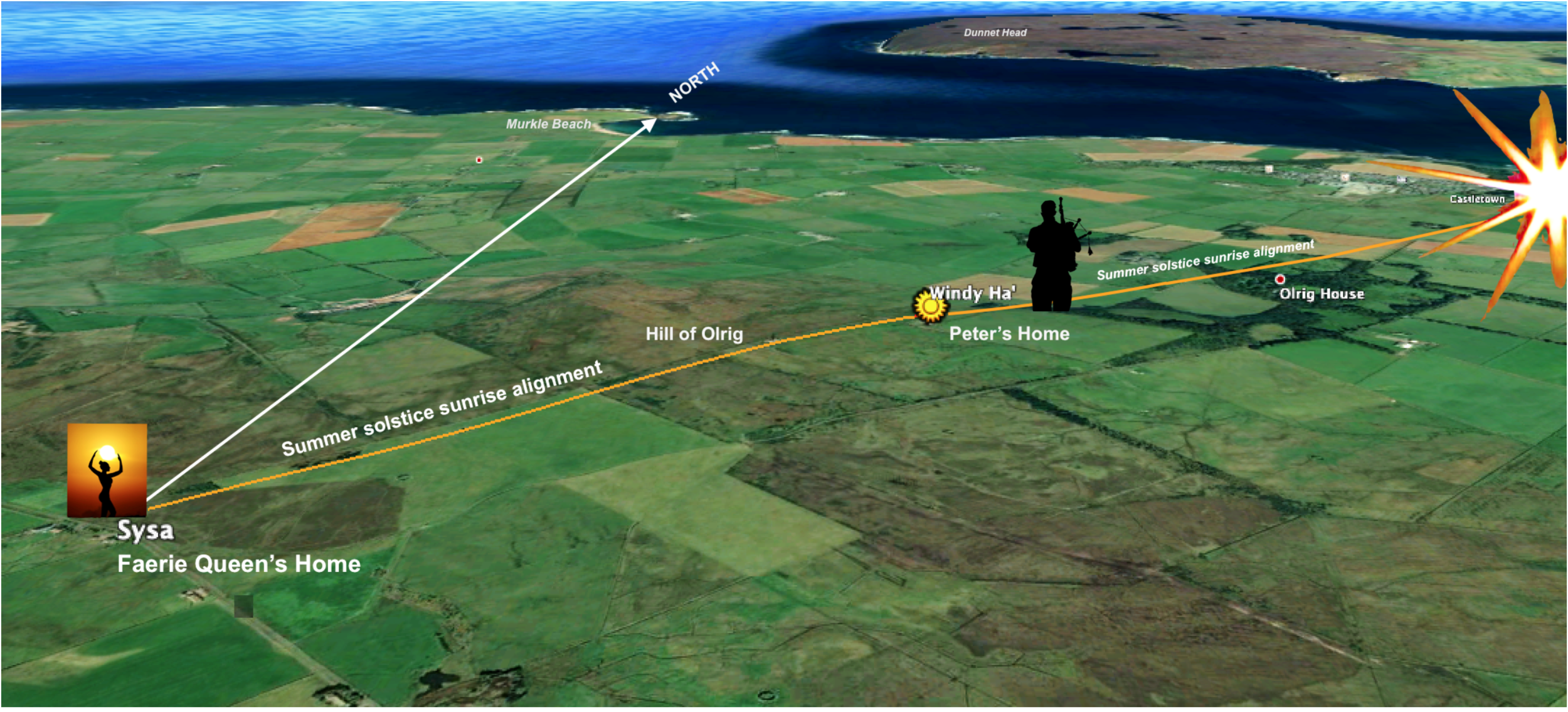
Astronomical Insights in Faerie Lore
This study examines the myth of the Piper of Windy Ha' from the north coast of Scotland, uncovering its encoded geographical and astronomical significance. Through an analysis of the myth’s narrative, the article reveals a solstice alignment between Windy Ha’ and Sysa Hillock, suggesting that the myth preserved ancient astronomical knowledge. By integrating cartographic methods and archaeoastronomical theory, the study demonstrates how such myths functioned as vehicles for understanding seasonal cycles and the Sun’s role in agricultural practices. This research highlights the connection between myth, landscape, and celestial events in the Neolithic worldview.
Rediscovering Colombia's Moon Goddess Of El Dorado
This research provides new insights into Muisca archaeoastronomy, territorial organization, and creation mythology, revealing previously uncharted geodetic alignments associated with the Temple of the Moon in Chía, Cundinamarca, Colombia. Through non-intrusive archaeological methods, the study also uncovered a rare tumbaga statuette representing Chía, the Muisca goddess of the moon, offering a tangible connection to Muisca creation mythology.
Delineating Tiwanaku's Mountain Meridian
This study unveils new perspectives on the territorial planning, orientations, and alignments of Tiwanaku’s monumental pyramid, enclosures, and semi-sunken temples, revealing a previously unexplored architectural schema. Central to this investigation is the concept of an uncharted prime meridian, or "mountain axis," which likely guided Tiwanaku’s architects, builders, and priests in aligning the city’s sacred structures with a prominent mountain summit to the south.
Lost Meridian of the Khmer Kings
Following an interpretation of the astronomical and cosmological themes expressed in the architecture of Cambodia's Angkor Wat temple complex, a potentially significant 10th-century dynastic prime meridian is delineated, and its use in determining the precise location of Angkor Wat is posited.



